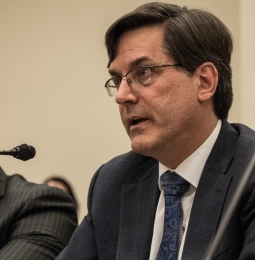
The Paradigm Shift in the Cost-Benefit State: Requiring More Good Than Harm "One of the greatest yet most readily addressable impediments to the cost-benefit state that I have seen first-hand is that agencies too often have interpreted their statutes to impede benefit-cost balancing despite the presidential directive to do more good than harm." – Paul Noe, Vice President for Public Policy, AF&PA.
"One of the greatest yet most readily addressable impediments to the cost-benefit state that I have seen first-hand is that agencies too often have interpreted their statutes to impede benefit-cost balancing despite the presidential directive to do more good than harm." – Paul Noe, Vice President for Public Policy, AF&PA.
By Paul R. Noe, Vice President for Public Policy, AF&PA May 22, 2019 - The U.S. Environmental Protection Agency (EPA) took an historic step to advance the “cost-benefit state,” the paradigm in which “government regulation is increasingly assessed by asking whether the benefits of regulation justify the costs of regulation.”[1] EPA Administrator Andrew Wheeler issued a memorandum directing agency staff to ensure “the agency balances benefits and costs in regulatory decision-making.”[2] He further directed the heads of each office — air, water, solid waste, and chemical safety — to develop a media-specific notice-and-comment rulemaking on how benefit-cost balancing and analytical best practices will be applied under each statute, starting with the air office, which will propose a regulation later this year. Reasonable minds can agree that the goal of regulation is to enhance, not undermine, societal well-being. For over 38 years, every president has ordered executive agencies like EPA to consider important tradeoffs and to regulate only if the benefits justify the costs. As the Clinton administration put it: “The only way we know how to distinguish between regulations that do good and those that do harm is through careful assessment and evaluation of their benefits and costs. Such analysis can also often be used to redesign harmful regulations so they produce more good than harm and redesign good regulations so they produce even more net benefits.”[3] As an alumnus of the White House Office of Information and Regulatory Affairs (OIRA) that reviews regulatory proposals, I wholeheartedly support the presidential orders to do more good than harm. I also believe the status quo is inadequate due to the institutional limitations of the agencies and OIRA (e.g., bureaucratic turf battles, failure to utilize both internal and external expertise, bias and the mismatch between the vast volume of regulation and OIRA's shrinking resources), and political dysfunctions (e.g., inconsistent support for OIRA by varying administrations, interest group rent-seeking and presidential electoral politics).[4] One of the greatest yet most readily addressable impediments to the cost-benefit state that I have seen first-hand is that agencies too often have interpreted their statutes to impede benefit-cost balancing despite the presidential directive to do more good than harm.[5] Yet, the statutory text typically does not prohibit benefit-cost balancing and thus does not require or authorize non-compliance with the presidential orders.[6] Moreover, alternatives to benefit-cost analysis, such as feasibility analysis, are inferior tools for enhancing societal well-being. Feasibility analysis involves regulating any significant risk to the extent technologically or economically feasible, while benefit-cost analysis seeks to maximize societal well-being. Compelling evidence shows that feasibility analysis lacks a normative justification, can just as easily lead to under-regulation as to over-regulation, and should have no place in government regulation.[7] The Supreme Court has clarified that EPA and other agencies can fully implement most regulatory statutes through benefit-cost balancing, not just feasibility analysis, and doing so can avoid an arbitrariness challenge.[8] EPA's initiative would take the next step by committing the agency to do more good than harm through binding regulations. This could overcome current impediments and greatly improve the efficiency, effectiveness and accountability of EPA's regulations. Although I believe other agencies should follow, EPA is a good agency to lead by example. EPA's regulations account for about 70 percent of the monetized costs and 80 percent of the monetized benefits of all regulations by the executive agencies.[9] EPA also is among the most experienced and qualified agencies at estimating costs and benefits, but there is ample room for improvement, as the National Academy of Sciences and OIRA have stated.[10] Inside the politically polarized Capital Beltway, it will come as no surprise if critics attack this initiative (just like the first benefit-cost executive order by President Reagan). But an evidence-based regulatory system can be a salutary antidote to political polarization. Important rules that can save lives and protect our health and environment are the very rules that can pass benefit-cost analysis with flying colors.[11] The importance of EPA both clarifying its authority to implement regulatory statutes through benefit-cost balancing and channeling its discretion to do more good than harm should not be underestimated. Most environmental statutes (like most other regulatory statutes) are silent or ambiguous on benefit-cost balancing. Fully embracing the first principle to do more good than harm is long overdue. EPA can be a leader on sustainable regulation. Paul Noe is Vice President for Public Policy at the American Forest & Paper Association. From 2001 – 2006, he served as Counselor to Administrator John Graham in OIRA, where he worked on the benefit-cost approach in the EPA regulation upheld by the Supreme Court in Entergy v. Riverkeeper. SOURCE: American Forest & Paper Association www.afandpa.org (AF&PA) |